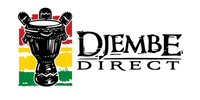Clara-Rae Genser. Apr. 09, 2004 in COMMUNITY FOLK
Drum your name, we were ordered, and we did, repeating the beat and the name until ordered to stop. Thus began a four-week study of drum therapy with Miranda Ritterman and her father, Dr. Jeff Ritterman, a cardiologist at Kaiser in Richmond.
It was fun, relaxing and entrancing, and made for a great feeling of community. And that was the goal, according to the Rittermans and to Christine Stevens, who flew up from Los Angeles each week to lead the sessions. From all walks of life, and different backgrounds, by the end of the sessions we knew each other liked each other a lot. Almost everyone was terribly unhappy when the four-week sessions were over.
The sessions were part of a study to see if drum therapy helps heart patients. As Richmond's pioneers in this study, we were invited to attend future sessions for cancer patients, to let them know our assessment of drum therapy.
Miranda Ritterman, a doctoral student at UC Berkeley, had read something about drum therapy and talked with her father about it. He was interested, and did his own reading on the subject. "He is a much faster reader than I am," Miranda Ritterman said, "and it was he who found this program of HealthRhythms, a new division within Remo Inc." Dr. Ritterman's heart patients were invited to take part in the study. Christine Stevens is an international speaker, music therapist and author. She supplied the drums (many of them bongo drums decorated with EKGs) and other heart décor.
Through her company, UpBeat Drum Circles, she offers community drum circles for corporate team-building, diversity training, personal growth, and health and wellness. The major aim is to fight stress, and bring relaxation and calm. One of the things Christine asked of us was to drum how we felt when we were stressed, and then, how we felt when we did not feel stressed. The response was dramatic.
The sessions included more than just drumming. There were "shakers" that looked like small apples, with which we played games in our circle, giggling and laughing. There was a large drum that made sounds likes waves when moved -- it could be a calm and soothing sound like huge waves breaking on a rocky shore. An important person during the study was Margie Ginotti, a registered nurse and adult-care manager. She was at every meeting, and joined in the fun, even leading them when Christine could not. We do not yet know the official findings of the study, but among ourselves those who participated know that drum therapy is a very positive and important addition to the world of therapy. Most of us plan to continue on our own in some way.
 Free shipping on everything!
Free shipping on everything!